Introduction
The COVID-19 pandemic has turned the world upside down into an unprecedented crisis. Businesses are severely affected and working from home has become the new default. Like most nations around the world, Singapore has not been spared from the pandemic, especially as infection cases initially spiralled out of control within the workers’ dormitories. This has also resulted in fear-driven mob mentality among the general public, such as panic buying. In the residential context, the series of inter-related societal issues has in turn posed challenges to the living patterns and work practices of many Singaporeans.
Premise
The premise of the thesis speculates a scenario where the pandemic is an ongoing phenomenon in Singapore, in which the DORSCON Alert Level remains at ORANGE in the foreseeable future. Situated in Kallang/Whampoa, the thesis proposes a prototype residential tower typology that aims to support working, recreation and everyday living needs of the work from home population in Singapore during the pandemic. The design visualises the tower as an antifragile vertical city that is able to selectively isolate yet sustain in isolation during a lockdown.
“A Vertical City of Workhomes and Isolated Communities”
Methodology & Building System
Categorised in a range of scales, the workhome typology sought to address the challenges and needs of the WFH population. On the unit level, the apartments will cater to a variety of family types through the use of open plans and movable furniture modules, providing the flexibility to accommodate different demographics. Special features such as the sanitary entryway and the extended working pod serve as reactionary implementations that reshape the new-normal of domestic practices.
As a collective system, units are arranged based on two levels of clustering systems: vertical block cluster and horizontal programmatic cluster. To support the needs of the residents outside of the unit scale, a variety of programs are inserted within individual horizontal cluster in a hierarchy of levels, giving a unique identity to each cluster. These spaces also serve as interim communal decks for residents to interact and mingle in a controlled and distanced environment. On the ground level, its immediate surrounding neighbourhood is served by the provision of commercial facilities.
Conclusion
As an individual affected firsthand by the problems of working (studying) and living in a domestic setting during a pandemic, the thesis is both an attempt to address the overall issues faced by the general population, as well as a personal desire for a more ideal living space.
The proposal also serves as a critique of the existing private residential real estate developments by introducing improved programs of public amenities to better cater to the residents. It also aims to rethink the concept of saleable and rentable spaces in this new era of domesticity and commerce.
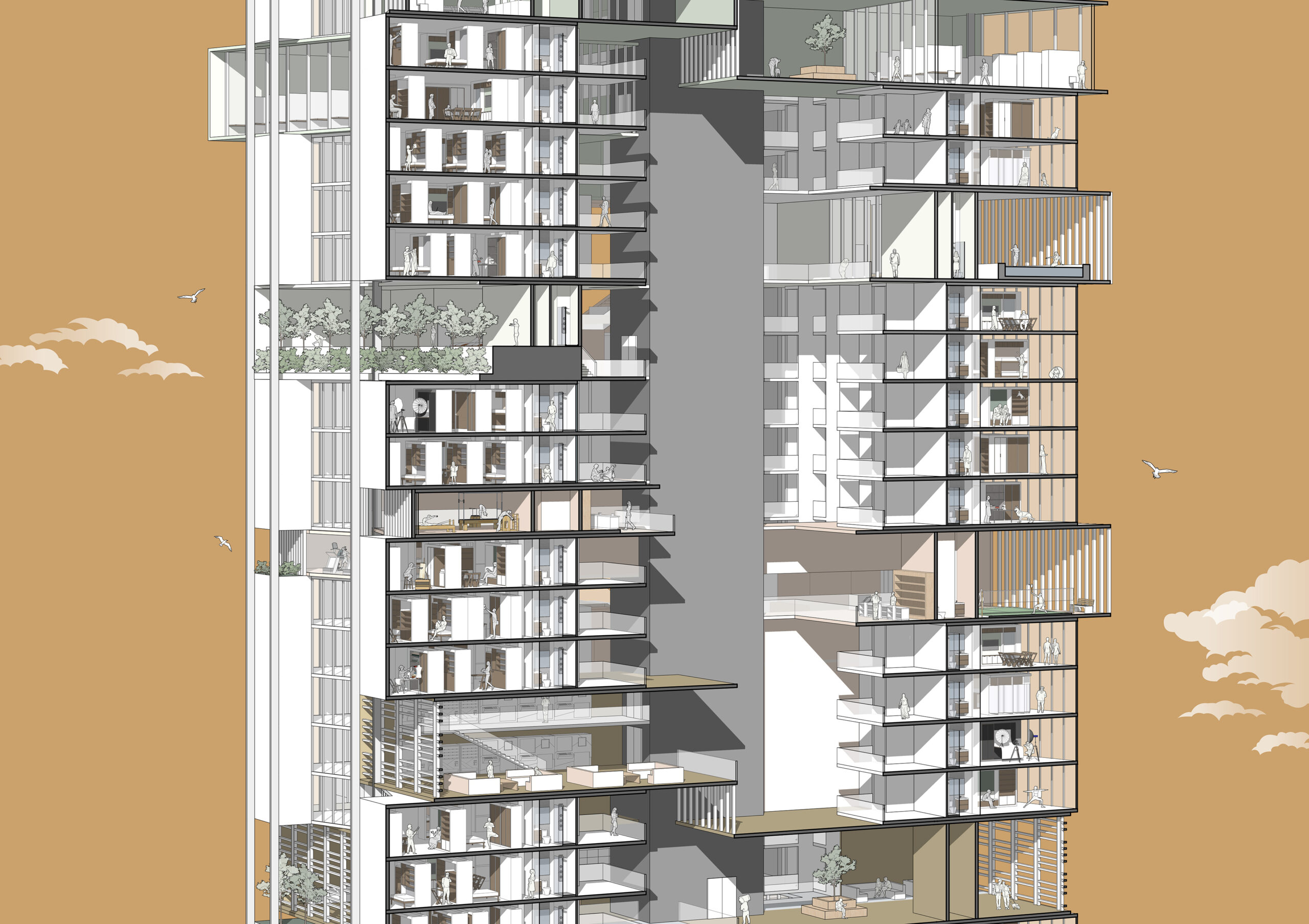
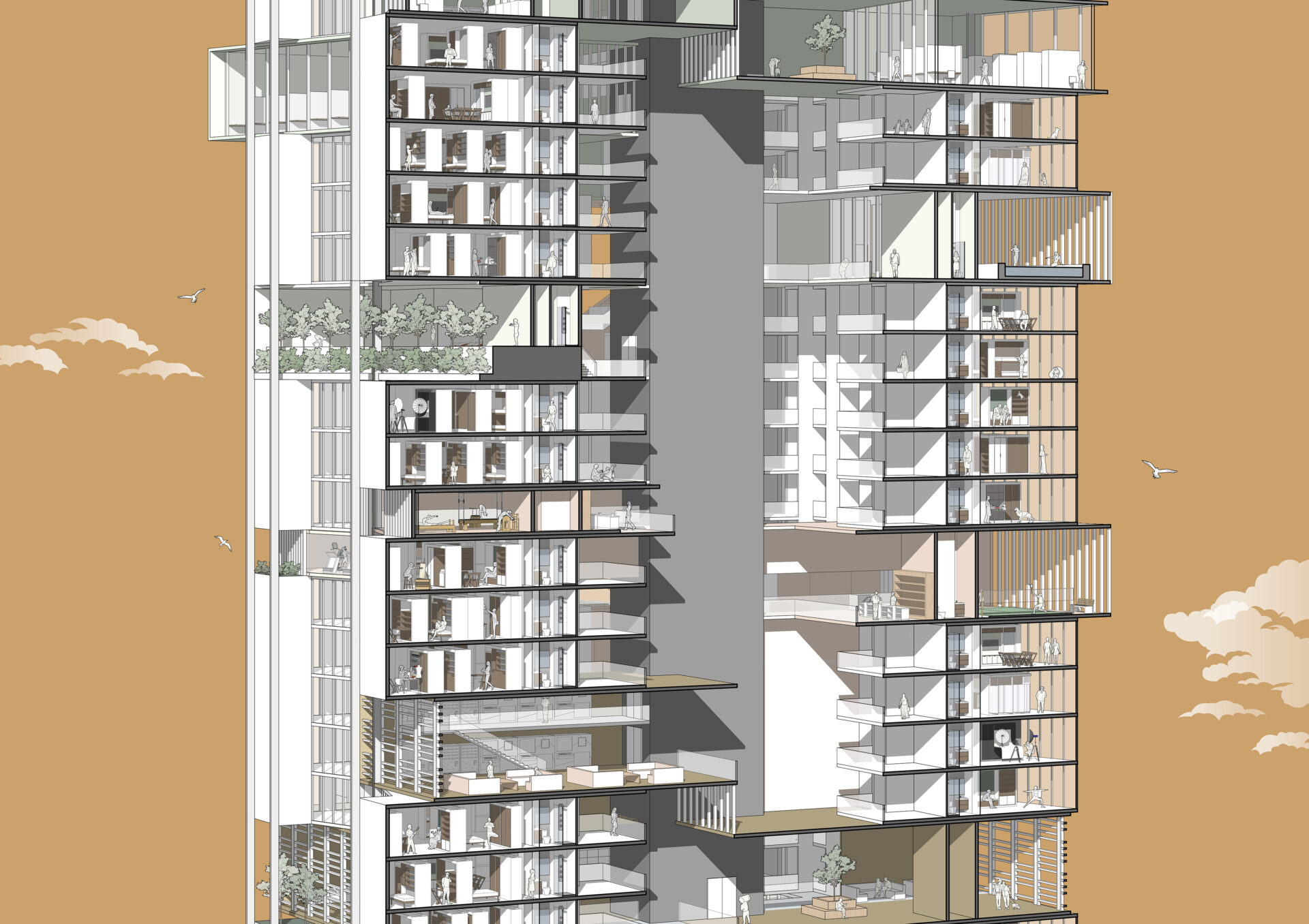
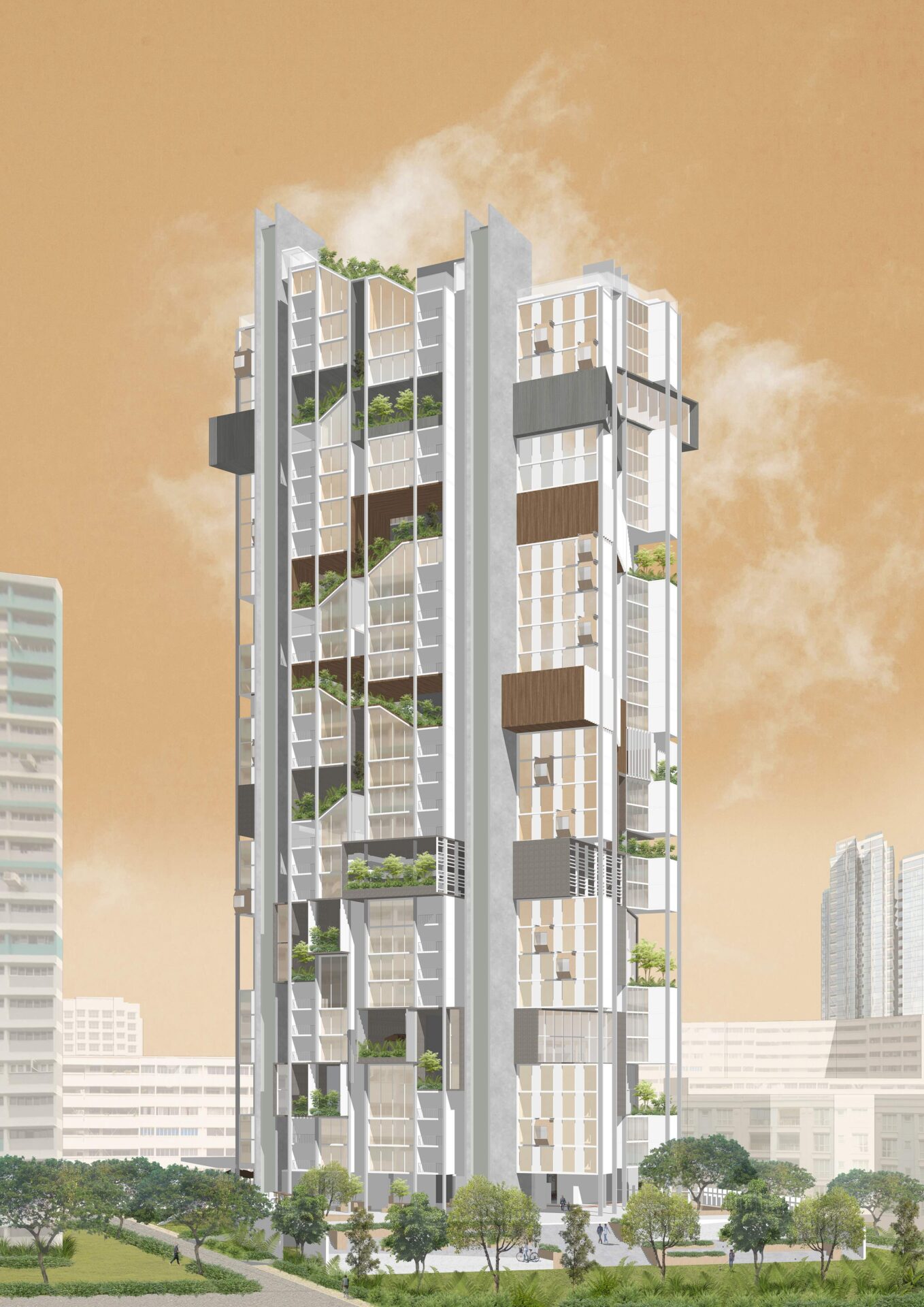
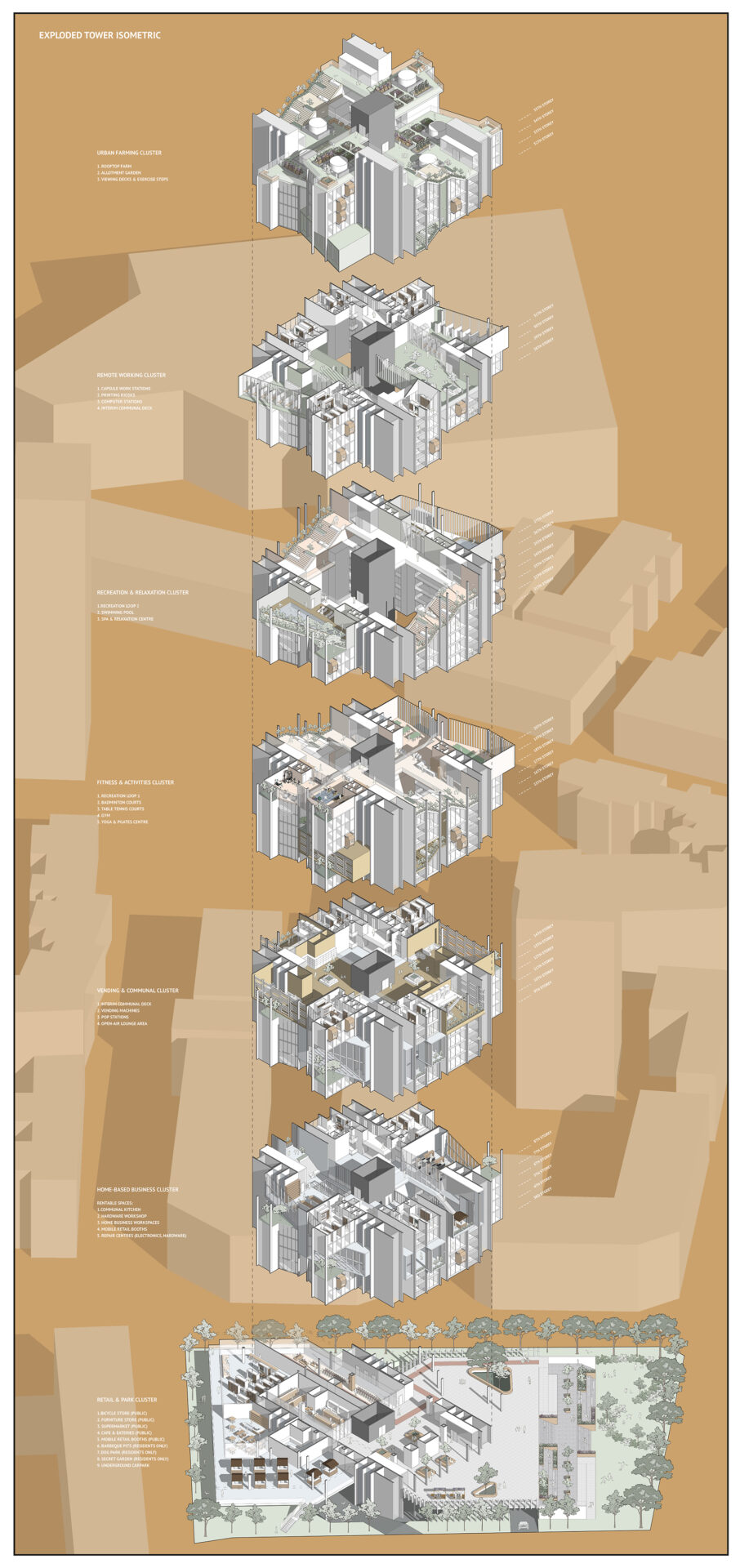
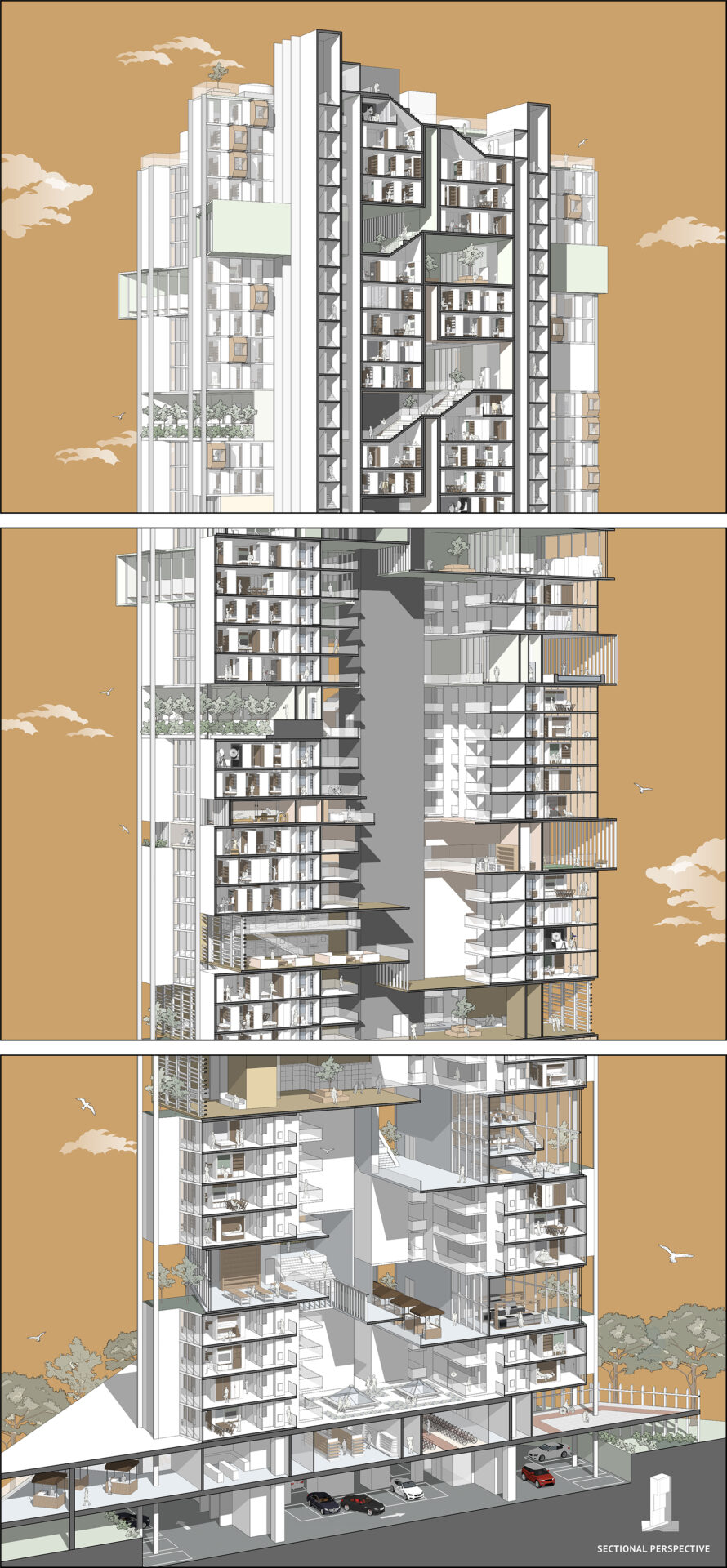

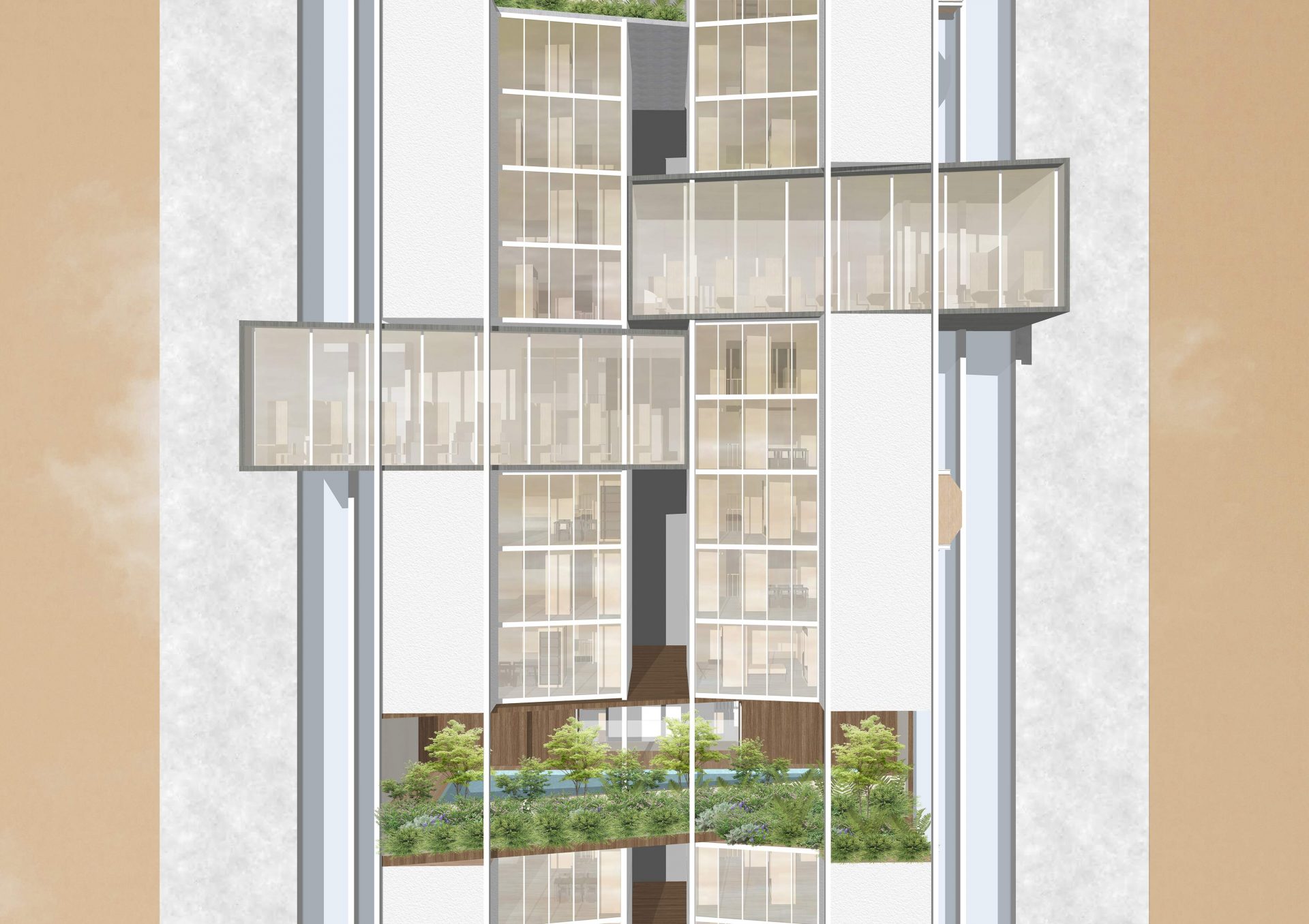
Supervisor's comments:
Work from home (WFH) changes the design of real estate development in multi-fold. It forces us to question the current models of CBD district, its offices and the notion of co-working spaces. This thesis examines the home front and enquirea about apartment living as it embraces WFH as a new or optional paradigm. It discusses design ideas diverse in scale that enable versatility and adaptable spaces for a wide range of activities and economic opportunities. The thesis leaves us to ponder further, resonating with Frances Holliss, author of Beyond Live/Work – The Architecture of Home-based Work when she highlighted the impact of home-based work interconnects social, economic and environmental sustainability.
- Assoc. Prof. Cheah Kok Ming